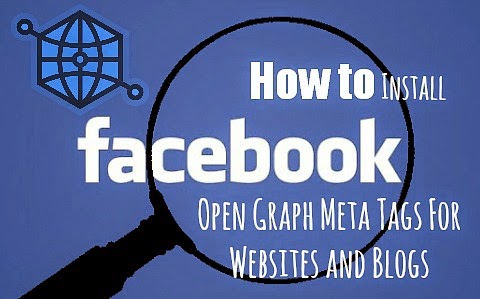Content Sharing Protocol for Webpages on Social Networks
 |
| Getting Your Site Better Visibility on Facebook |
Instructions to Follow:
Installing the Graph Protocol in HTML:
Now inside this HTML tag you just need to mention one more namespace that is xmlns:og='http://ogp.me/ns#' just add the line to your html tag and make sure have spaces between the already present element inside your HTML tag. After completion your code will look something like the below code.<html xmlns="http://www.w3.org/1999/xhtml">
That's all your site is now equipped with Facebook's graph protocol and now it's time to markup your data.<html xmlns='http://www.w3.org/1999/xhtml' xmlns:og='http://ogp.me/ns#'>
Marking Your Site with Meta Tags
Make sure to replace the default image to be shown for a post without any image with a desired image URL, preferably your site's logo so that your logo will show up as thumbnail when there's no image in the post. The above data tags are used for Blogger's XHTML template so make sure to replace them with your respective site languages data tags. And in case you wish to track your sharing on Facebook then add in your Facebook App ID and profile ID which keep track of your shared pages via Analytics by going to facebook.com/insights which will show insights for all your apps, pages, domains and everything.<b:if cond='data:blog.pageType == "item"'> <meta expr:content='data:blog.pageName' property='og:title'/> <meta expr:content='data:blog.canonicalUrl' property='og:url'/> <meta content='article' property='og:type'/> </b:if> <meta expr:content='data:blog.title' property='og:site_name'/> <b:if cond='data:blog.postImageThumbnailUrl'> <meta expr:content='data:blog.postImageThumbnailUrl' property='og:image'/> <b:else/> <meta content='Your Default Image URL to be shown when image is not available for a particular shared webpage' property='og:image'/> </b:if> <b:if cond='data:blog.metaDescription != ""'> <meta expr:content='data:blog.metaDescription' name='og:description'/> </b:if> <meta content='Your Facebook Apps ID via developer console' property='fb:app_id'/> <meta content='Your Facebook profile's or page's ID' property='fb:admins'/>
Tip: You can force Facebook to use the default post thumbnail for your blog post or site by leaving the default image URL parameter (red in above code) empty in the above code.-
Top 10 Raw must have Graph Meta Tags for Increased Visibility and SEO:
Make sure to use URLs in place of URL content and avoid using them as names like usage of geniusknight.com as site name will be wrong use instead use Plain site name as Genius Knight. For more info on these graph meta tags read the documentation at ogp.me for a better understanding. Skip those which do not apply to your webpage as a null value or a wrong value can degrade your site's performance.<meta property="og:title" content="Title Here" /> <meta property="og:type" content="article" /> <meta property="og:url" content=" http://www.geniushowto.com/" /> <meta property="og:image" content=" http://geniushowto.com/image.jpg" /> <meta property="og:description" content="Description Here" /> <meta property="og:site_name" content="Site Name, i.e. Genius How to" /> <meta property="article:published_time" content="2014-07-15T05:59:00+01:00" /> <meta property="article:modified_time" content="2014-07-16T19:08:47+01:00" /> <meta property="article:section" content="Article Section" /> <meta property="article:tag" content="Article Tag" /> <meta property="fb:admins" content="Facebook number ID" />
Graph search enables you to rank higher in search engines as your shared content gets indexed via social shares as well thereby making it appear more and more in search results. Apart from that it also improves user interaction and sharing of your webpages drastically.